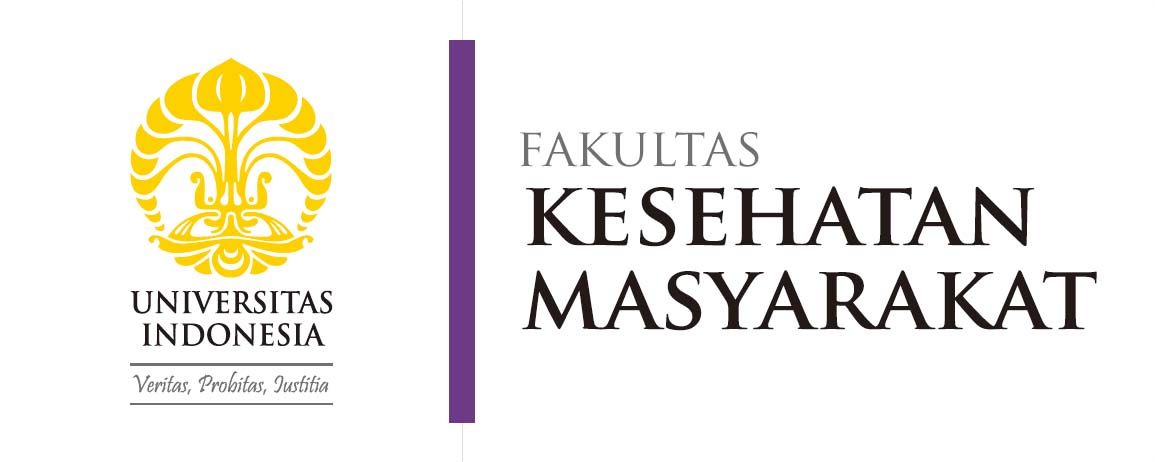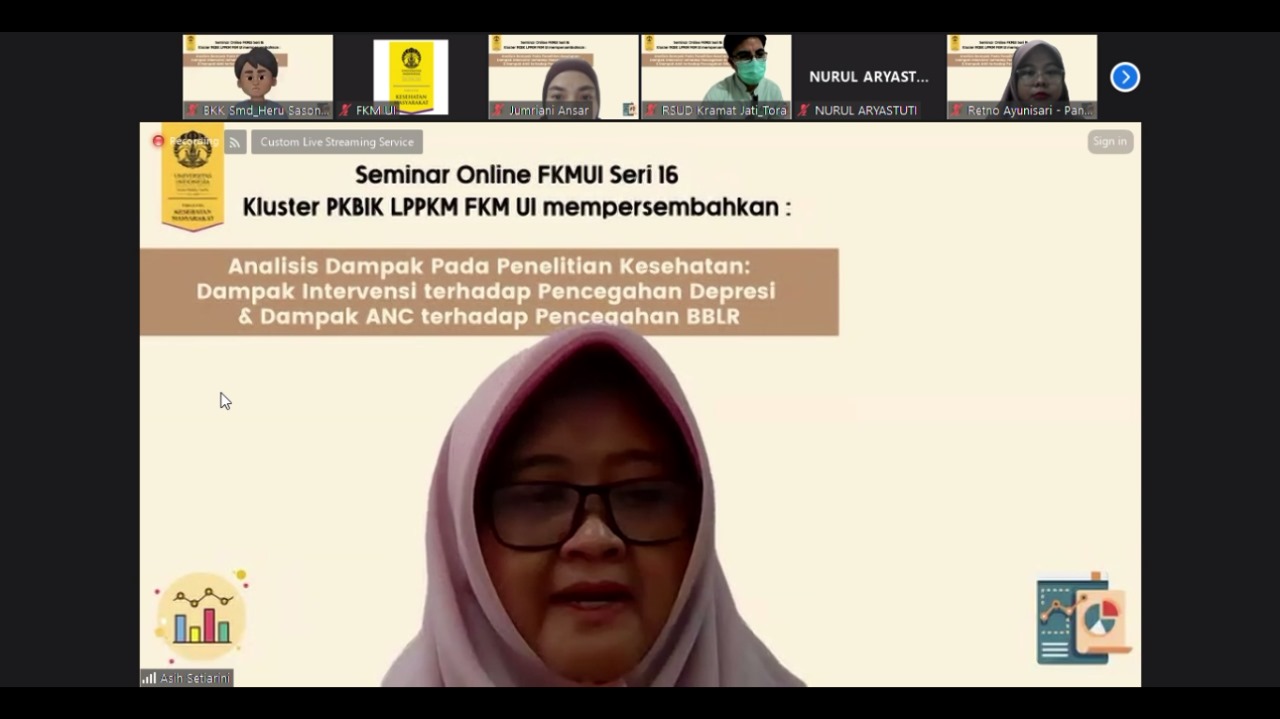On Monday, August 5, 2024, the Faculty of Public Health (FPH) at the Universitas Indonesia (UI), through the Health Biostatistics and Health Informatics Study Cluster (PKBIK), hosted the 16th Online Seminar of FPH UI, titled “Impact Analysis in Health Research: The Impact of Interventions on Depression Prevention and the Impact of ANC on Low Birth Weight Prevention.”
The Vice Dean for Education, Research, and Student Affairs at FPH UI, Dr. Ir. Aish Setiarini, M.Sc., shared her expectations regarding the topic in her opening speech. “Currently, the incidence of depression is on the rise. We know that the effects of depression are particularly evident in the health of toddlers and children. Thus, this topic is highly interesting to discuss, and its impact will be profound because we are now looking for ways to address these issues according to the underlying causes. Through this seminar, we will learn a lot, particularly related to impact analysis, interventions, and examining them together with experts,” said Dr. Aish.
The Health Biostatistics and Health Informatics Study Cluster (PKBIK) is one of the research clusters at FPH UI, led by Prof. Dr. Besral, S.K.M., M.Sc. During this SEMOL, Prof. Besral also participated as a discussant, with Dr. Rr. Arum Ariasih, S.K.M., M.K.M., and Dr. Terry Yuliana Rahadian Pristya, S.K.M., M.K.M., as speakers.
The first discussion, presented by Dr. Rr. Arum, focused on the Implementation Science (IS) approach as a strategy for educating postpartum depression prevention in antenatal classes for pregnant women. Dr. Rr. Arum’s research, conducted as operational research using a mixed-methods exploratory sequential design, showed significant effectiveness in preventing postpartum depression, with knowledge scores increasing by 11.27% and behavior scores by 5.51%. It also reduced SRQ scores by 56.14%, EPDS scores by 16.88%, and EPDS scores by up to 19.50% from the final trimester of pregnancy to one month postpartum.
“This study produces an educational strategy to prevent postpartum depression through an implementation science approach, involving support from the Health Department in ensuring the readiness and engagement of the teams formed for planning, implementing educational strategies, drafting SOPs, modules, and educational media, as well as conducting education and depression screening for facilitators of antenatal classes and pregnant women’s mental health at health centers,” explained Dr. Rr. Arum.
Next, Dr. Terry Yuliana Rahadian Pristya, S.K.M., M.K.M., presented a paper titled “The Impact of Antenatal Visits on Low Birth Weight Prevention in Indonesia: Analysis of the 2017 SDKI Data.” Dr. Terry Yuliana’s research is based on the SDGs 2030 target of reducing infant mortality to 12 per 1,000 live births.
The study, which was conducted cross-sectionally with a binary outcome through logistic regression, aimed to produce evidence-based recommendations for programs based on the analysis of three alternative statistical methods for the impact of antenatal visits on low birth weight (LBW) in Indonesia. A new finding in Dr. Terry Yuliana’s study was the use of three statistical methods in analyzing the binary outcome for LBW from national survey data, which identified the most suitable statistical method for the program.
“Analysis of cross-sectional data with binary outcomes, Cox regression, or Poisson regression with robust variance are alternative statistical methods to logistic regression for cases with low prevalence, such as LBW. This is because the association values produced are almost the same,” concluded Dr. Terry Yuliana.
Prof. Dr. Besral, S.K.M., M.Sc., a Professor at FPH UI, provided a discussion titled “Impact Analysis of Health Interventions.” His explanation outlined the design of epidemiological studies used in research.
“There are two methods that can be used in intervention studies: direct intervention or primary data and indirect intervention. It is called an intervention or experimental study if there is an intervention given by the researcher, while it is called an observational study if no intervention is given by the researcher,” Prof. Besral explained, presenting the initial diagram of the epidemiological study design.
In intervention studies, randomization is used to distinguish between Randomized Control Trials (RCT) and Non-randomized Control Trials. The difference between these two only affects the difference in the effects obtained. The RCT method can be calculated directly, while Non-randomized Control Trials must consider other factors.
Meanwhile, observational studies compare groups that can be compared with those that cannot. Analytical studies consist of cross-sectional, case-control, and cohort methods, while descriptive studies include cross-sectional, case reports, and ecological studies.
“Then, how we measure the impact depends on the measurement metrics we use. In numerical data, there will be pre-post comparisons. If an intervention succeeds in improving the condition being evaluated, the intervention is considered impactful. However, without a comparison, it is impossible to conclude whether the intervention had an effect or not,” explained Prof. Besral regarding the measurement of the impact of an intervention in a study. “In categorical data, such as the Odds Ratio, Prevalence Ratio, and Risk Ratio used by Dr. Terry, these measures compare the outcome between exposed and unexposed groups.”
The discussions presented by the speakers at the 16th SEMOL FPH UI, attended by students, are expected to enrich the participants’ knowledge about impact analysis in health research. (ITM)

